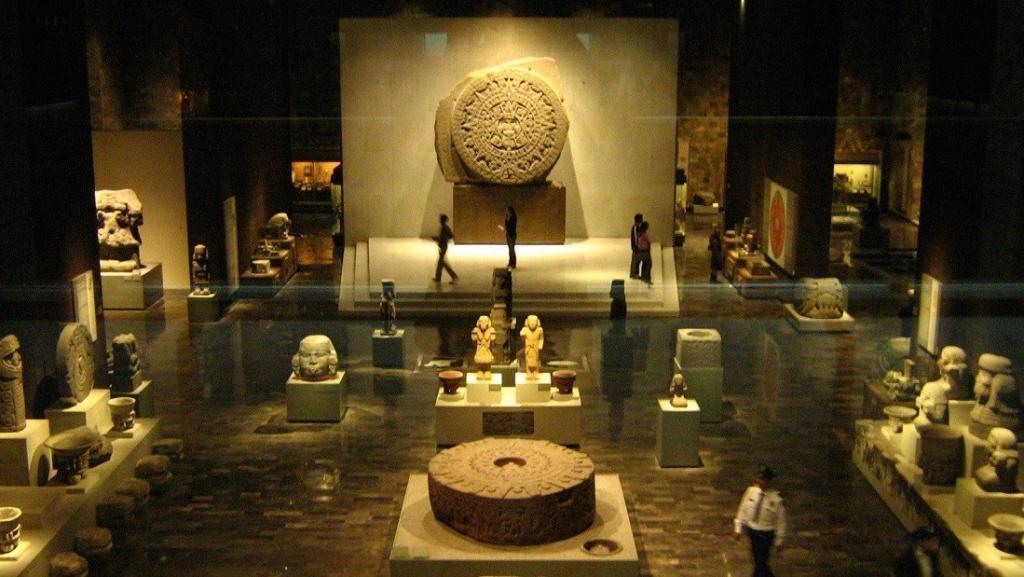AN ABSOLUTE MUST FOR EVERYONE INTERESTED IN ANTHROPOLGY AND HISPANIC CULTURES.
ABOUT THE NATIONAL ANTHROPOLOGY MUSEUM..
Between 1940 and 1960, an intense intellectual movement flourished that sought to build a Mexican identity based on the dignity of the indigenous heritage that had been looked down on. For this reason, the movement wanted to create a great museum that tied together all indigenous Mexican heritage, especially its archaeology.
Justo Sierra and Jaime Torres Bodet played an essential role in the realisation of this dream, which the administration of President Adolfo Lopez Mateos began planning, and was built under the direction of architect Pedro Ramírez Vázquez between 1963 and 1964. Today, the National Anthropology Museum is a worldwide reference due to the richness, quality and museology of the collections it exhibits.
The building itself has won awards. Worthy the note is the amazing suspended roof, like an umbrella, which is the central focus in the large courtyard, designed in the style of the open forums of the ceremonial centres of the Maya. All the decorations on the façade are allegorical, with references to pre-Hispanic symbols such as the snake or the snail.
The museum is divided into two major sections: Anthropology and Ethnography. The Anthropology section occupies the ground floor of the building, and access to the rooms is directly from the large central atrium. The section consists of eleven rooms: Introduction to Anthropology, Peopling of the Americas, Pre-classic period in the Central Highlands, Teotihuacan Culture, The Toltecs and Epi-classic period, Mexica Culture, Cultures of Oaxaca, Cultures of the Gulf Coast, Mayan Culture, Cultures of the West and North. And in the centre of the museum, chairing the central hall, is the great Aztec calendar which was recovered from the ruins of Tenochtitlan, the Sun Stone.
The Ethnography section is located on the top floor, with eleven rooms dedicated to: Indigenous Peoples, Gran Nayar, Puréecherio, Otopamean, Sierra de Puebla, Oaxaca, Indigenous Peoples of the South, Gulf Coast, Huasteca and Totonacapan, Mayan Peoples of the plains and jungles, Mayan villages of the mountains, The North East: mountains, deserts and valleys, and the Nahuas.


